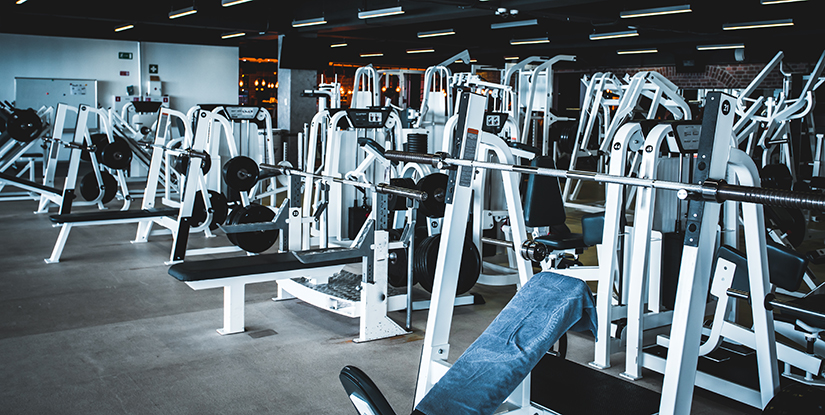Shoulder pain during bench press is super common. You lie down, grab the bar, start your set—and boom, your shoulder feels weird. Could be a sharp little jab. Could be that stiff, locked-up feeling.
And yeah, sometimes it just shows up—with zero warning. First set, light weight, and still… something doesn’t feel right.
You might think, “Am I doing something wrong?” Probably. But you’re not alone.
This kind of pain usually means something’s off—your form, your shoulder, or how much you’re lifting.
In this guide, we’ll keep it simple. Why it happens. How to fix it. What to do if it keeps bugging you. So you can keep benching—without wrecking your shoulder.
Why does bench press cause shoulder pain?
Shoulder pain during bench press usually isn’t random. If your shoulder acts up when you lift, it’s trying to tell you something. And in most cases, it’s one of these five problems.

1. Your form is off
Most common reason. If your elbows flare out wide, or the bar touches too high on your chest, your shoulder’s taking the hit—not your chest.
You’ll feel a sharp or pinching pain, usually right in the front. It might even feel worse as the weight gets heavier.
👉 Feels like your shoulder’s doing more work than your pecs.
2. Your rotator cuff is weak or irritated
Your rotator cuff might be small, but if it’s weak? You’ll feel it. That shaky, unstable feeling when the bar gets low? That’s it. Maybe the bar wobbles a bit. Or your shoulder just feels “off” even with light weight.
👉 Like your joint isn’t locked in.
3. Your mobility sucks
Tight shoulders? Stiff upper back? It shows. You’ll feel tension, maybe not pain at first, but you can’t move cleanly. The bar path feels awkward.
👉 You’re forcing it through, not flowing through the lift.
4. You’re pushing too hard, too soon
Jumping weight too fast. Training chest 3–4 times a week. No real rest.
You keep pushing, but your shoulder never really gets a break.
👉 It’s that heavy, sore feeling that just hangs around after you’re done.
5. Old injuries are still hanging around
That shoulder tweak you “walked off” a few months ago? It didn’t really go away.
You’ll feel the same pain, same spot, every time you bench—even if everything else seems fine.
👉 Same lift, same pain, every week.
In short:
Bench press shoulder pain isn’t just bad luck.
It’s a pattern. And the sooner you figure out which one, the sooner you can fix it.
How to find the real cause of bench press shoulder pain
Shoulder pain during bench press sucks—but before you stop training, you need to know what’s actually wrong. Is it your form? An old injury? Just tight muscles?
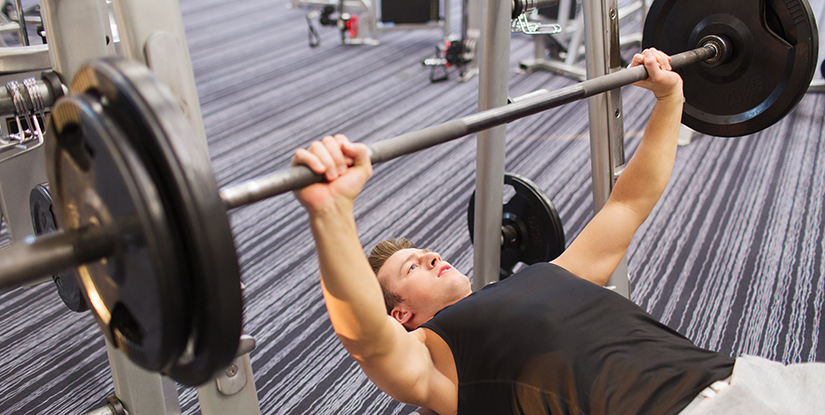
Here’s a super simple way to figure it out.
1️⃣ Where does it hurt?
🟡Front of your shoulder?
That’s usually a form issue. Maybe your elbows are flaring or the bar’s landing too high.
It feels like a sharp pinch right at the front—especially at the bottom of the rep.
🟡Deep inside or toward the back?
That’s more likely a stability or mobility problem.
It’s the kind of pain that’s hard to point to. Just feels “off.”
2️⃣ When does it hurt?
Hurts during warm-up?
⚠️ That could be an injury or inflammation. Even light weights hurt.
Only at the bottom?
You’re probably dropping the bar too low or losing shoulder tension.
Gets worse with more reps?
Classic overuse. You’re doing too much, too fast.
3️⃣ Can you move your shoulder without pain?
Try this: lift your arm overhead, rotate it, push it into a wall.
👉 If that hurts or feels tight—even without weight—your issue isn’t just form. It’s mobility or an old injury.
Quick check:
- Pain in front = check your form
- Deep weird pain = check mobility or cuff muscles
- Pain even without weights = could be an actual injury
💡 Still not sure? Ask a coach. Or better—get it checked by a physio before it gets worse.
Fix your bench press form to stop shoulder pain
If bench press gives you shoulder pain, it’s probably not just your shoulder—it’s your form.
A small form mistake? That’s all it takes to wreck your shoulder. Don’t worry—we’ll fix it step by step.
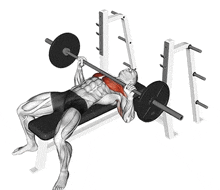
1. Pull your shoulder blades back—and down
Before you even touch the bar, pull your shoulder blades back.
Now drop them down—like you’re sliding them into your back pockets. Yep, right there.
💡 Imagine trying to “lock” your upper back into the bench.
This takes pressure off your shoulders and helps you push from a strong base.
2. Don’t let your elbows fly out
If your elbows stick straight out to the sides when you press? That’s trouble.
It cranks your shoulder joint open and puts all the stress there.
✅ Keep your elbows a bit tucked in—around a 45° angle.
Not too close, not too wide. Think: “just outside your ribs.”
3. Lower the bar to the right spot
Too high on your chest = shoulder pain.
The bar should come down to just under your nipples.
⚠️ If it’s landing near your collarbone, that’s a red flag.
4. Lock your body in place
Feet flat. Glutes tight. Back slightly arched.
Don’t wiggle. Don’t let your shoulders lift off the weight bench.
👉 You want to feel like one solid unit—not just arms pushing.
Quick check:
- Are your shoulders staying pinned?
- Are your elbows tucked a bit?
- Bar hitting mid-chest?
- Body tight, not floppy?
Fix those, and you’re already lifting smarter—not harder.
Bench press alternatives that don’t hurt your shoulder
If bench press hurts your shoulder, don’t just push through it. You’re not being “tough”—you’re asking for a real injury.
Here’s the good news: there are better options. These moves still train your chest hard—but they’re way easier on your shoulder.
1. Dumbbell bench press
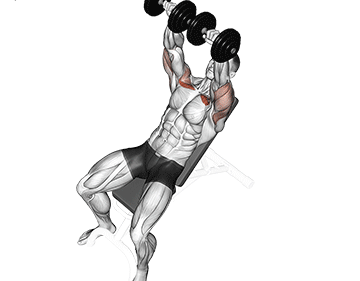
Barbell locks your arms in one path. Dumbbells don’t.
You can move more naturally. Less pressure on your joints.
✅ If your shoulder feels pinchy with a bar, try this instead.
Stop when your elbows are level with your torso—don’t drop too deep.
2. Floor press

No bench. Just the floor.
This keeps your elbows from going too far down—aka the “danger zone” for shoulder pain.
💡 It’s perfect if your pain kicks in at the bottom of a regular bench.
3. Push-ups—but hands elevated
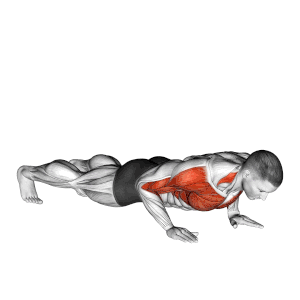
Regular push-ups too much? Put your hands on a bench or box.
This limits the range at the bottom—where most shoulder pain happens.
👉 Bonus: your core works harder too.
You don’t need to quit training.
You just need to train smart—for now.
Start with what your shoulder can handle, and go from there. Training should feel sustainable—not like damage control.
When shoulder pain means it’s time to stop benching
Shoulder pain during bench press doesn’t always mean something serious—but sometimes, it does.
If you ignore the warning signs, you risk turning a small issue into a big one. Here’s how to tell when it’s time to hit pause… or call in help.
❌ When to stop benching (for now)
- The pain gets worse with every set
- It hurts during warm-up—even with just the bar
- You feel a sharp pinch at the bottom of the rep
- You’re changing your form just to “work around” the pain
- The soreness sticks around for days after
💡 If you’re hesitating mid-rep because of pain—that’s already your answer.
🚨 When to see a doctor or physio
- You feel a pop, snap, or sudden jolt during the lift
- Pain wakes you up at night or stops you from lifting your arm overhead
- You’ve had the same pain for weeks and it’s not getting better
- If your arm feels weird—like swelling up, bruising, or just weaker than usual
⚠️ If it’s bugging you even when you’re not training, it might be time to let someone check it out.
You’re not soft for resting. You’re smart.
Let your body recover now, and you’ll be lifting longer, stronger, and pain-free in the long run.
Shoulder pain bench press doesn’t mean you have to quit the bench press forever. But it does mean something needs to change.
Fix your form. Swap the movement. Let your shoulder breathe.
You’ll come back stronger—and smarter.
Training through pain isn’t brave.
Strength Training with awareness—that’s how you stay strong for years, not just burn out in weeks.
Pay attention early, not when it’s already too late.
And trust this: a pain-free bench is always worth the effort.

Hi, I’m Alex Carter, part of the editorial team at Leadman Fitness. We specialize in crafting premium custom racks, cable machines, functional trainers, and strength accessories for home and commercial gyms. With a background in competitive powerlifting and gym design consulting, I’ve spent years testing gear under heavy loads and optimizing layouts for efficiency.
I focus on translating real-world user frustrations—like space limitations, budget constraints, or durability needs—into actionable solutions. By collaborating directly with our engineers and facility owners, I ensure our custom equipment evolves to solve the unspoken challenges lifters face daily. What I share isn’t textbook advice; it’s battle-tested insight from racks I’ve welded, cables I’ve replaced, and gym floors I’ve trained on.
